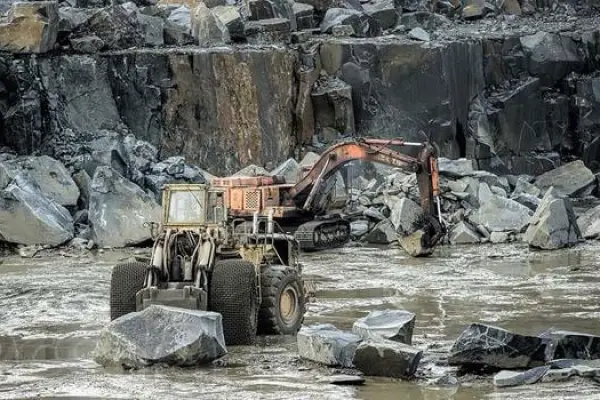Ukrainian stone is gaining global recognition. According to preliminary data from Ukrstat, exports could reach $180 million in 2025—a figure that prompts a reevaluation of Ukraine’s role in the global market. International experts note the high quality and competitiveness of Ukrainian granite.
Where is granite mined in Ukraine today? Quarries are scattered across the crystalline massif—one of the oldest geological structures on the planet. It should be noted that this magmatic rock formed 2.8–3.6 billion years ago when our planet underwent active geological evolution. Studies of the geological structure of the crystalline shield confirm the uniqueness of Precambrian rocks.
The key advantage of Ukrainian granite is its variety of textures and shades. From classic gray to exclusive plum colors—each deposit offers unique decorative properties.
Granites from Ukrainian deposits are distinguished by high strength and frost resistance. Fine-grained granite withstands over 300 freeze-thaw cycles, with a density of up to 2.7 g/cm³. It should be noted that the radioactivity of Ukrainian quarry granite is minimal—only 0.05 µSv/h, which is 4–5 times lower than the natural background.
Zhytomyr Region: The Heart of the Granite Industry
The Zhytomyr region accounts for 60% of national production. Its diversity impresses even experienced geologists. It is known that local quarries provide a full range—from budget construction stone to exclusive decorative varieties that adorn the palaces of European nobility.
Korosten and Korostyshiv Deposits.jpg)
The two neighboring quarries are often confused. Not without reason. Both deposits produce high-quality gray granite, but Korostyshiv encompasses several sites, including the renowned Pokostivka deposit, with a variety of shades from pink to dark gray.
In my work with clients, I notice growing demand for Korosten Grey. This medium-grained variety combines reasonable cost ($80–100/m² for polished slabs for export) with excellent technical characteristics—strength reaches 130–145 MPa according to GOST 9479-98, exceeding requirements for facade work.
Lezniky Quarry: An Industry Legend
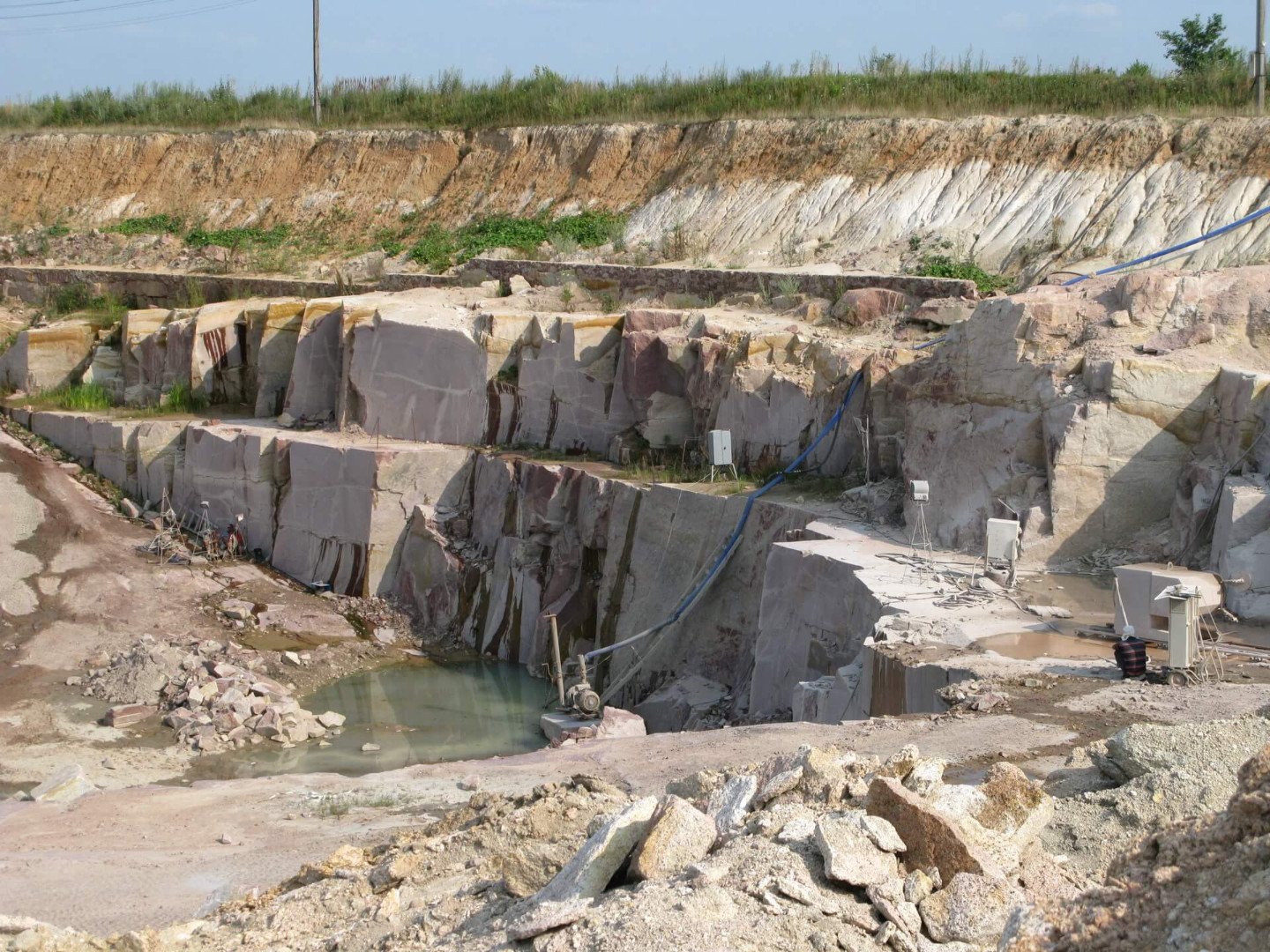 Lezniky Red is a hallmark of the Ukrainian industry. This unique variety is valued by architects worldwide for its vibrant color and excellent polishability.
Lezniky Red is a hallmark of the Ukrainian industry. This unique variety is valued by architects worldwide for its vibrant color and excellent polishability.
Granite mining here began in the 1920s. Ukraine supplies red granite under the international brand Lezniki Red—a name recognized from Tokyo to New York. Thus, its fine-grained structure (1–3 mm) ensures mirror-like polishing, and its color saturation remains vibrant for decades.
Lezniky stone is used in prestigious architectural projects worldwide. Clients note the material’s remarkable ability to retain its original shine and color even after 15–20 years of use in harsh climatic conditions.
Vasylivka Deposit and Mezhyrich Granite
Vasylivka’s green-brown stone is unique. Its coarse-grained texture creates distinctive patterns. Given its structural properties, this variety is ideal for landscape design—natural inclusions of dark minerals provide inherent decorativeness.
Nearby, Mezhyrich granite is mined—a gray-pink construction stone of medium grain size. This variety is primarily used in construction due to its stable technical characteristics and moderate price.
Regional Conclusions: Zhytomyr quarries remain the industry’s flagship, offering a full spectrum of decorative varieties. From classic gray to exclusive red—the diversity is impressive.
Kirovohrad Region: Kapustynka Deposit
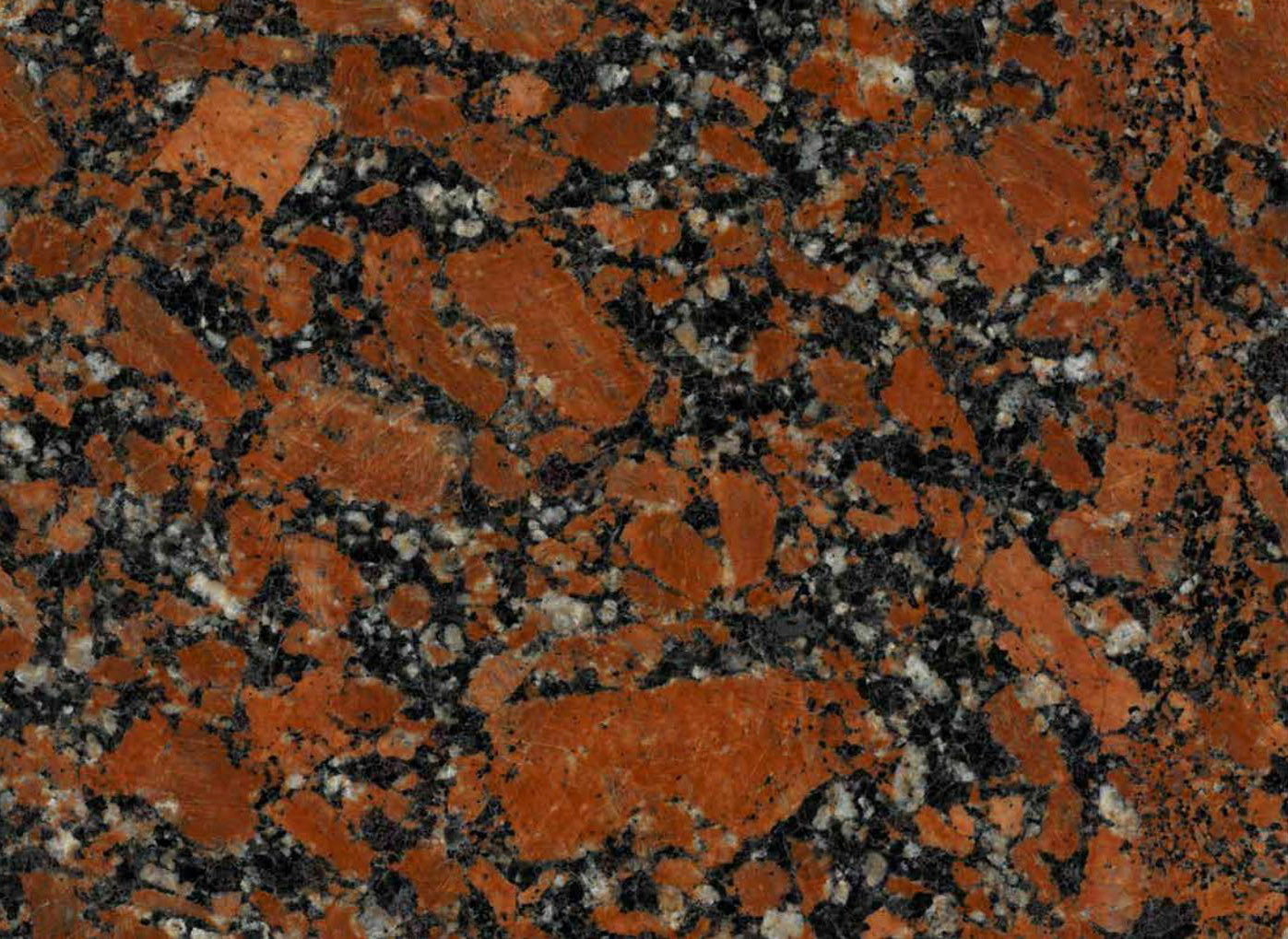 Kapustynka Red is the king of Ukrainian granites. Its vibrant scarlet hue is captivating. The coarse-grained structure with grains up to 12 mm creates a striking play of reflections that changes with lighting—appearing burgundy in the morning and blazing raspberry at sunset.
Kapustynka Red is the king of Ukrainian granites. Its vibrant scarlet hue is captivating. The coarse-grained structure with grains up to 12 mm creates a striking play of reflections that changes with lighting—appearing burgundy in the morning and blazing raspberry at sunset.
The Kirovohrad deposit is known for its high content of potassium feldspar, which gives the stone its intense coloration. As a result, Kapustin Red has become a recognized brand in the USA, Germany, and Poland, with prices reaching $120–180/m² for processed material.
A comparative analysis of major deposits showcases the diversity of Ukrainian granites and their technical parameters.
| Deposit | Color | Structure | Strength, MPa | Export Name |
|---|---|---|---|---|
| Korosten | Gray | Medium-grained | 140-160 | Korosten Grey |
| Lezniky | Red-pink | Fine-grained | 180-200 | Lezniki Red |
| Kapustynka | Bright red | Coarse-grained | 120-140 | Kapustin Red |
| Vasylivka | Green-brown | Coarse-grained | 130-150 | Vasilievsky Rudnyk |
| Buky | Black | Fine-grained | 160-180 | Bukin Black |
This table clearly illustrates the technical differences between the main varieties of Ukrainian granite and their commercial designations on the international market.
Eastern Regions: Dnipropetrovsk and Zaporizhzhia Regions
The east of the country specializes in technical varieties. Strength is the primary criterion here. In a recent project, Tokivka stone was used to construct a runway—handling immense loads but passing the test.
Tokivka Deposit
.jpg) The largest quarry in the east holds reserves of 70 million m³. Gray-pink granite is distinguished by consistent quality. It should be noted that its petrographic composition includes 25–30% quartz—an optimal level ensuring high material hardness per GOST 30629-2011.
The largest quarry in the east holds reserves of 70 million m³. Gray-pink granite is distinguished by consistent quality. It should be noted that its petrographic composition includes 25–30% quartz—an optimal level ensuring high material hardness per GOST 30629-2011.
Kamyana Mohyla Deposit
Ancient rocks dating back about 2.8 billion years. Impressive, isn’t it? Zaporizhzhia stone is used for premium granite paving—its density of 2.65–2.7 g/cm³ guarantees a century of service even under heavy traffic.
Interim Conclusions: Eastern quarries produce the industry’s “workhorses.” High strength and consistent quality make these varieties indispensable for infrastructure projects.
Northern Regions: Promising Deposits
The Poltava deposit of pink granite exhibits interesting textural features. An unfairly overlooked region. The local pink stone has attractive decorative properties and is used in architectural projects.
The Khmelnytskyi deposit is one of the oldest, with mining dating back to the 19th century. The Romanivka deposit in the Kharkiv region supplies high-quality construction granite for regional projects where reliability and affordability are key.
Special Deposits and Rare Varieties
Buky Quarry: Black Granite
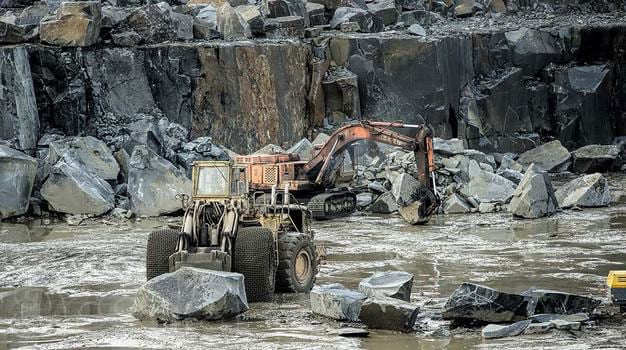 The Buky quarry in the Zhytomyr region is Ukraine’s only source of true black granite. Technically, Buky granite is gabbro—an intrusive rock with a high content of dark-colored minerals.
The Buky quarry in the Zhytomyr region is Ukraine’s only source of true black granite. Technically, Buky granite is gabbro—an intrusive rock with a high content of dark-colored minerals.
Given its structural properties, Ukraine uses black granite primarily for ritual items and premium cladding. Its water absorption is only 0.1%, making it ideal for outdoor applications.
Emelyanivka Deposit
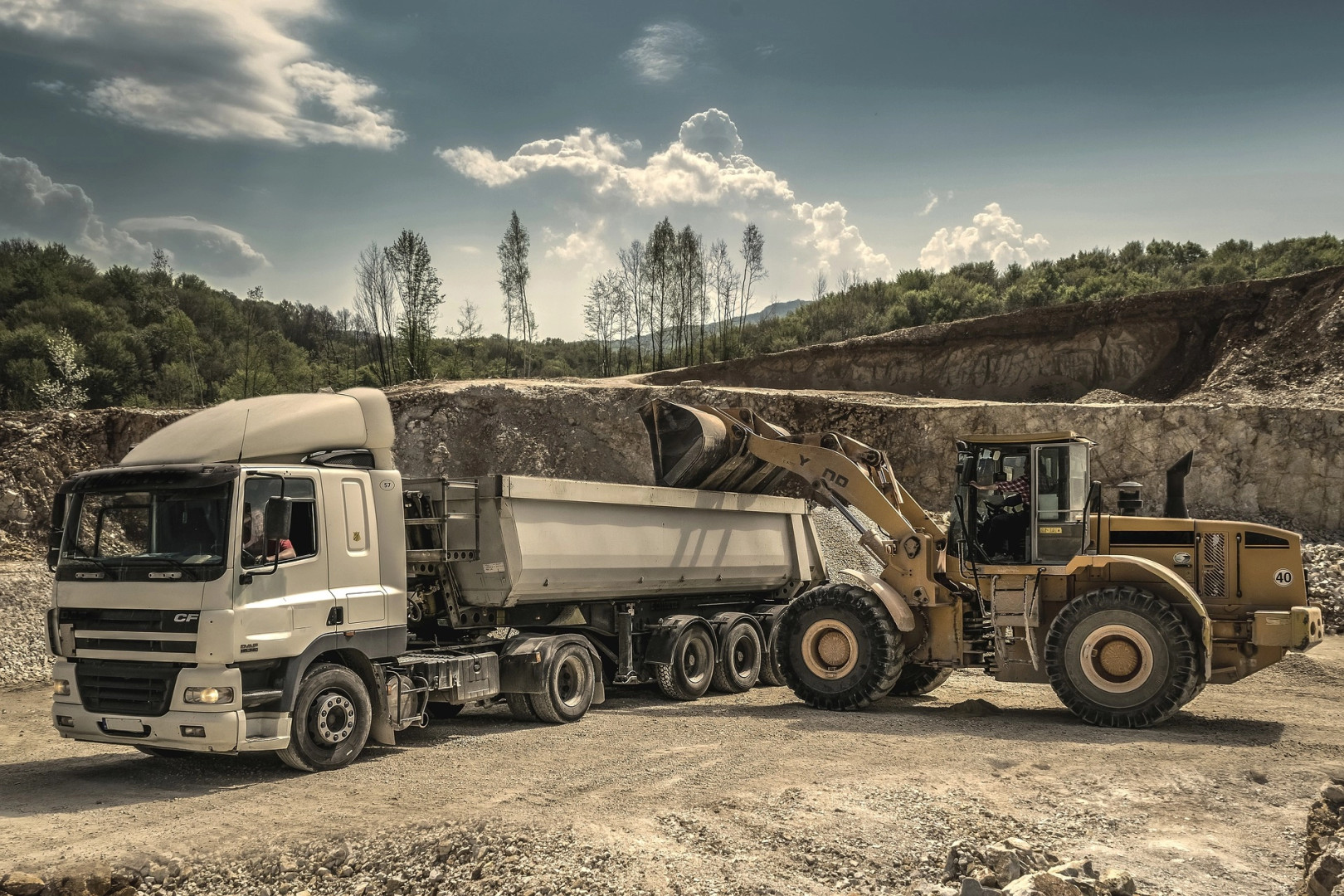 The Emelyanivka deposit is unique for its orange granite with a uniform texture. This medium-grained granite is distinguished by color stability and high decorative properties. It is known on the global market as Emelyanov Orange.
The Emelyanivka deposit is unique for its orange granite with a uniform texture. This medium-grained granite is distinguished by color stability and high decorative properties. It is known on the global market as Emelyanov Orange.
“In working with private clients, Emelyanivka granite is chosen for fireplaces and countertops. Its warm hue creates a cozy atmosphere, and its strength ensures product durability,” notes geologist Andriy Petrenko, a natural stone consultant.
Special Rocks: Gabbro and Labradorite
Buky Quarry: The Standard of Black Gabbro
Buky gabbro is the standard for black stone. Technically, it is not granite but gabbro—a magmatic rock dominated by dark-colored minerals, ensuring a deep black color without impurities.
In the production of ritual items, this material is indispensable. Its water absorption of just 0.1% guarantees engraving durability for decades. Buky gabbro is exported as Bukin Black with European-standard quality certifications.
Holovyn Quarry: Volga Blue
 Labradorite from the Holovyn quarry is a natural wonder. Iridescence creates a striking play of blue and green hues. Technically, it is anorthosite, but on the international market, it is known as Ukrainian Blue—a brand recognized by enthusiasts worldwide.
Labradorite from the Holovyn quarry is a natural wonder. Iridescence creates a striking play of blue and green hues. Technically, it is anorthosite, but on the international market, it is known as Ukrainian Blue—a brand recognized by enthusiasts worldwide.
Practical Guide: How to Choose the Right Variety
Choosing stone is an art of compromise. Beauty versus strength? Not always. Ukraine’s modern granite varieties offer optimal combinations of aesthetics and functionality for any task.
Selection Criteria by Application
For facade work, frost resistance is the priority. Korosten and Tokivka varieties withstand over F300 cycles. Considering building structural features, medium-grained rocks are preferable—they hold fastenings better and are less prone to chipping during installation.
- Granite Monuments: Fine-grained varieties ensure sharp engraving (Lezniky, Buky)
- Cladding Granite: Low water absorption is critical for durability (Vasylivka, Emelyanivka)
- Granite Countertops: Class A radioactivity is mandatory for interiors
- Facade Granite: Resistance to temperature fluctuations down to -40°C
Technical Parameters: What to Check
A quality certificate is your protection. Demand documentation for every batch. Experience shows that skimping on checks can lead to serious issues—high water absorption causes cladding deterioration.
Key characteristics of Ukrainian granite per DSTU B V.2.7-310:2016:
- Compressive Strength: Minimum 120 MPa for outdoor applications
- Water Absorption: No more than 0.5% for facades
- Density: 2.6–2.7 g/cm³—optimal range
- Grain Size: Fine for interiors, medium for exteriors
- Radioactivity: Class A (up to 370 Bq/kg) for residential structures
- Abrasion: No more than 0.2 g/cm² for flooring
- Frost Resistance: F200–F300 for Ukraine’s climate
- Thermal Expansion Coefficient: 5–8×10⁻⁶ 1/°C
“Never buy stone without lab reports. Ukrainian manufacturers are required to provide full technical documentation—it’s a guarantee of quality and your peace of mind,” emphasizes Ihor Kravchenko, an industry expert with 20 years of experience.
Environmental Aspects: Responsible Mining
Environmental concerns are increasingly important to clients. Rightly so. Leading quarries are adopting sustainable development principles—land reclamation, recycled water systems, and dust control.
The Lezniky quarry has become an example of ecotourism. A flooded section has transformed into a picturesque 15-meter-deep lake. Today, tours are conducted here, demonstrating how industry can harmoniously coexist with nature.
Modern Mining Technologies
Explosives are becoming a thing of the past. Granite mining technology is evolving toward gentler methods. Stone-cutting with diamond-wire saws yields 85% marketable stone compared to 60% with traditional blasting.
Modern quarry development schemes are revolutionizing the industry. Open-pit mining remains dominant, but quarry methods are becoming more precise and cost-effective.
local residents’ breathing.
Ukrainian Granite Mining Technologies
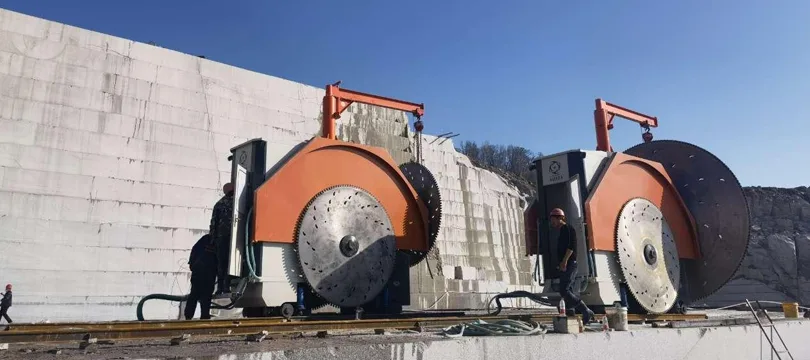 Ukraine extracts granite using modern methods. Key technologies include:
Ukraine extracts granite using modern methods. Key technologies include:
- Stone-cutting with diamond-wire saws
- Bore-wedge method for large block extraction
- Air cushion technology for delicate varieties
Open-pit mining prevails in 90% of quarries. Granite blocks are extracted up to 3×2×2 m, followed by cutting into standard-sized granite slabs. Modern granite quarry development schemes significantly reduce transportation costs and improve product quality.
Modern quarry methods allow extraction of up to 85% marketable stone compared to 60% with traditional blasting. This significantly boosts mining profitability and reduces environmental impact.
Applications and Export of Ukrainian Granite
Ukraine uses various granite types across multiple sectors. Construction granite is used for granite paving and facade tiles. Decorative varieties are employed for cladding, granite monuments, and countertops.
Ukrainian granite exports in 2025 amounted to:
- Europe—65% (Poland, Germany, Italy)
- USA—20%
- Asia—15% (mainly China and Japan)
Ukrainian granite products are exported as blocks (40%), slabs (35%), and finished items (25%). The average price of Ukrainian granite ranges from $850–1200/m³, depending on variety and processing.
“The success story of Ukrainian granite began in 2018 at the Pokostivka deposit when workers discovered a block with unique natural patterns. Named ‘Signs at 700’ by locals, the stone became a memorial slab in central Zhytomyr, attracting tourists and boosting the granite business. Today, this deposit supplies exclusive decorative stone to European museums at up to $3000/m².”
Expanded Selection Guide: Technical Criteria
A comprehensive comparison of Ukrainian granites, considering all technical parameters, will help make informed decisions for specific projects.
| Variety | Application | Strength, MPa | Frost Resistance | Water Absorption, % | Abrasion, g/cm² | Price, $/m² |
|---|---|---|---|---|---|---|
| Korosten Grey | Facades, cladding | 130-145 | F300 | 0.3-0.4 | 0.15 | 80-100 |
| Lezniky Red | Monuments, interiors | 140-160 | F250 | 0.2-0.3 | 0.12 | 150-200 |
| Buky Gabbro | Ritual items | 160-180 | F300 | 0.1 | 0.08 | 120-160 |
| Kamyana Mohyla | Paving, cobblestones | 150-170 | F400 | 0.2 | 0.1 | 60-80 |
| Vasylivka Green | Landscape, decor | 120-140 | F250 | 0.4-0.5 | 0.18 | 90-120 |
Prices are for 20 mm polished slabs on FOB terms (2024–2025). Characteristics comply with DSTU B V.2.7-310:2016.
Practical Selection Recommendations
- For high-rise facades: Korosten—optimal balance of strength and frost resistance
- For memorial complexes: Lezniky or Buky gabbro—maximum polishability
- For public spaces: Kamyana Mohyla—high wear resistance
- For private interiors: Any Class A variety for radioactivity
- For restoration: Selection based on historical analogs and compatibility
Ukraine’s quarries hold treasures formed over billions of years in the depths of an ancient crystalline massif. The competitiveness of Ukrainian granite grows annually—its variety, consistent quality, and reasonable prices earn recognition from New York to Tokyo. From classic Korosten grey to exclusive Lezniky red, each deposit offers unique solutions for the most ambitious architectural projects of today.
